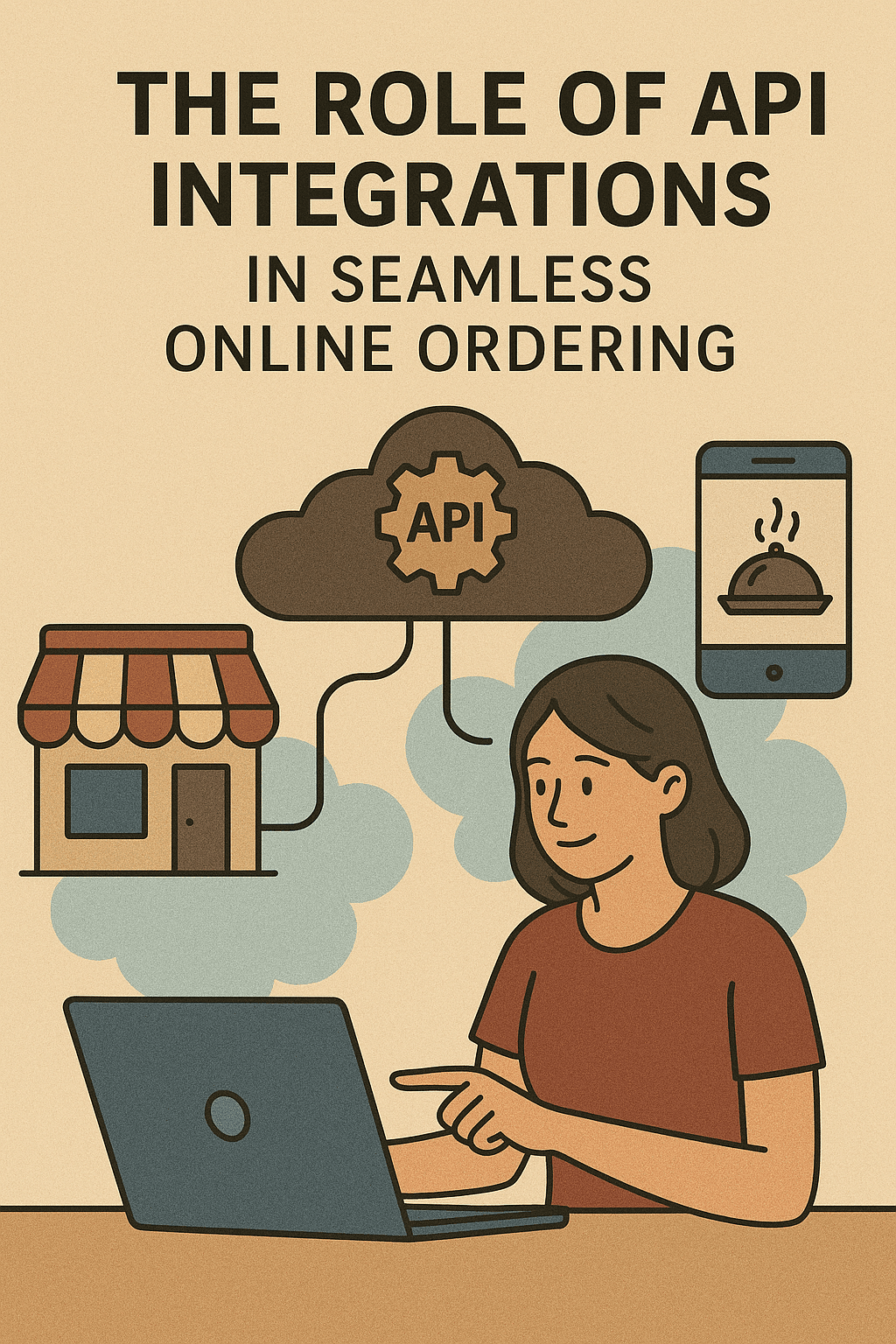In today’s fast-paced digital economy, real-time inventory syncing isn’t just a nice-to-have — it’s absolutely essential. For any business offering online orders, whether you’re a restaurant, local retailer, or national brand, keeping your stock levels accurate across all platforms is critical. Customers expect a seamless experience, and failing to deliver can result in lost sales, poor reviews, and damaged brand reputation.
In this blog post, we’ll explore why real-time inventory syncing is so important, how it impacts customer satisfaction, operational efficiency, and business growth, and what to look for when choosing an inventory sync solution.
Table of Contents
- What is Real-Time Inventory Syncing?
- The Risks of Not Syncing Your Inventory in Real-Time
- Benefits of Real-Time Inventory Updates
- Real-Time Inventory in the Food & Beverage Industry
- Retailers and Real-Time Stock Management
- Impact on Multi-Channel Selling and Omnichannel Strategies
- Integration with POS, Delivery Platforms, and E-Commerce Systems
- How Real-Time Inventory Affects Customer Experience
- Choosing the Right Real-Time Syncing System
- Conclusion: Real-Time Syncing is Non-Negotiable
1. What is Real-Time Inventory Syncing?
Real-time inventory syncing refers to the automatic and instantaneous updating of stock levels across all your sales platforms whenever a purchase, return, or stock adjustment is made. Whether it’s through your e-commerce website, app, third-party delivery platforms like Deliveroo or Uber Eats, or in-store purchases, a robust syncing system ensures that every channel reflects your actual, up-to-date stock status.
In simple terms: if someone buys it, your system knows it instantly.
2. The Risks of Not Syncing Your Inventory in Real-Time
Let’s start with what happens if you don’t use real-time syncing. Delayed inventory updates can lead to:
a. Overselling
Imagine a customer places an order for a dish, only to find out minutes later it’s unavailable. Overselling not only causes frustration but also results in cancelled orders and lost trust.
b. Underselling
You may actually have stock available, but your outdated system shows it as unavailable — this is underselling, and it costs you revenue you could’ve earned.
c. Negative Customer Reviews
Online customers demand reliability. A single poor experience with stock availability can prompt negative reviews on Trustpilot, Google, or social media.
d. Manual Errors and Labour Costs
Without syncing, staff must manually update inventory across different systems. This wastes time and increases the risk of human error.
e. Complications with Refunds and Returns
If an item is purchased online but is actually out of stock, refunding and handling the return process becomes a logistical nightmare.
3. Benefits of Real-Time Inventory Updates
Let’s flip the coin and look at the many benefits of implementing a real-time inventory management system.
a. Accurate Stock Visibility
You know what you have, where you have it, and how much of it is available — all in real-time.
b. Improved Customer Experience
When customers can trust that what they see online is accurate, customer satisfaction goes through the roof.
c. Increased Sales
By preventing both overstocking and understocking, real-time syncing helps you maximise every sales opportunity.
d. Streamlined Operations
Staff spend less time on admin and more time on tasks that grow the business. It also improves warehouse efficiency.
e. Better Forecasting and Demand Planning
With accurate stock data, your business can make more informed decisions around purchasing, promotions, and peak trading periods.
4. Real-Time Inventory in the Food & Beverage Industry
Restaurants, takeaways, and street food vendors operate in highly dynamic environments, where ingredient availability can change by the hour. If your menu is not synced in real-time, you risk disappointing customers and wasting ingredients.
Use Case: Food Delivery Platforms
If your system doesn’t update immediately after selling the last portion of a dish, someone ordering via a delivery platform may still buy it — causing cancellations, refund requests, and bad reviews.
Real-time menu syncing ensures your offerings reflect what’s actually available, helping you maintain a trustworthy and professional image.
5. Retailers and Real-Time Stock Management
For retailers, especially those operating both online and in-store, real-time syncing prevents inventory mismatches that can damage the brand.
Click & Collect
Customers choosing to pick up in-store expect their item to be ready when they arrive. Real-time syncing guarantees the item hasn’t been sold out between the time of order and collection.
Omnichannel Retail
Real-time syncing is a cornerstone of successful omnichannel retail. It empowers businesses to unify stock across physical stores, websites, apps, and marketplaces like Amazon or eBay.
6. Impact on Multi-Channel Selling and Omnichannel Strategies
In the era of multi-channel retail, your inventory must be up-to-date across all platforms. That includes:
- Your website
- Mobile app
- In-store POS
- Marketplaces (Amazon, Etsy, Not On The High Street)
- Social commerce (Facebook, Instagram)
- Delivery platforms (Deliveroo, Uber Eats, Just Eat)
Failing to sync across all these platforms creates a fragmented customer experience, where product availability is inconsistent and unreliable.
7. Integration with POS, Delivery Platforms, and E-Commerce Systems
Real-time syncing isn’t a standalone feature — it needs to integrate with the tools you already use. Look for systems that support integration with:
- Point of Sale (POS) systems
- E-commerce platforms like Shopify, WooCommerce, Wix, or BigCommerce
- Delivery aggregators (Just Eat, Deliveroo, Uber Eats)
- Warehouse Management Systems (WMS)
These integrations ensure that stock adjustments are made automatically and across all touchpoints, reducing the burden on staff and minimising errors.
8. How Real-Time Inventory Affects Customer Experience
a. Instant Availability
Customers don’t want to wonder if an item is in stock. With real-time syncing, they don’t have to — it’s always accurate.
b. Trust and Loyalty
Consistency builds trust. Customers who can depend on your website or app to show the correct availability are more likely to return.
c. Fewer Refunds, More Repeat Purchases
Cancelled orders due to stock issues frustrate customers. Preventing these with accurate syncing reduces returns and encourages repeat business.
d. Real-Time Updates for Staff Too
Let’s not forget: syncing doesn’t only benefit customers. It helps your team stay in the loop, making better recommendations, improving order accuracy, and enhancing the overall service.
9. Choosing the Right Real-Time Syncing System
Not all systems are created equal. When choosing a real-time inventory sync solution, look for the following features:
✅ Cloud-Based Infrastructure
Ensures updates are visible across all devices and locations instantly.
✅ Multi-Platform Integration
Supports syncing across your entire sales ecosystem — website, app, POS, and more.
✅ Customisable Sync Frequency
Some platforms offer syncs every 5–15 minutes — ideal for fast-moving stock environments.
✅ Low-Latency API Connectivity
APIs allow different systems to “talk” to each other. A strong API infrastructure is essential for high-speed, real-time updates.
✅ Error Handling and Alert Systems
You need to know if something goes wrong. Systems that offer alerts when stock thresholds are hit or when syncing fails are invaluable.
✅ Inventory Analytics and Reporting
Visibility into your stock movement, shrinkage, deadstock, and high performers is key to growing your business.
10. Conclusion: Real-Time Syncing is Non-Negotiable
Whether you’re a restaurant, local retailer, or national brand, the case for real-time inventory syncing is crystal clear.
Here’s what it brings to your business:
- ✅ Greater accuracy
- ✅ Higher customer satisfaction
- ✅ Reduced labour costs
- ✅ Fewer errors and cancellations
- ✅ Increased sales
- ✅ Seamless integration with third-party platforms
In the world of online ordering, where customer expectations are sky-high and competition is fierce, your inventory system could be your biggest asset or your greatest weakness.
Don’t let outdated systems hold you back.
Bonus: Real-Time Inventory Syncing and Sustainability
Reducing food waste and overstocking not only improves margins but also contributes to your sustainability goals. Real-time syncing helps align your supply with demand — avoiding unnecessary wastage and promoting smarter consumption.
Get Ahead with OrderFor.net
At OrderFor.net, we understand the importance of live inventory syncing, especially for local businesses offering same-day delivery. Our system is built with real-time updates at its core, ensuring that your customers never order what you can’t deliver.
If you’re looking to streamline your operations, reduce errors, and enhance your customer experience, let’s talk. Our platform syncs your products across websites, apps, and delivery channels in real-time, making sure you’re always one step ahead.


